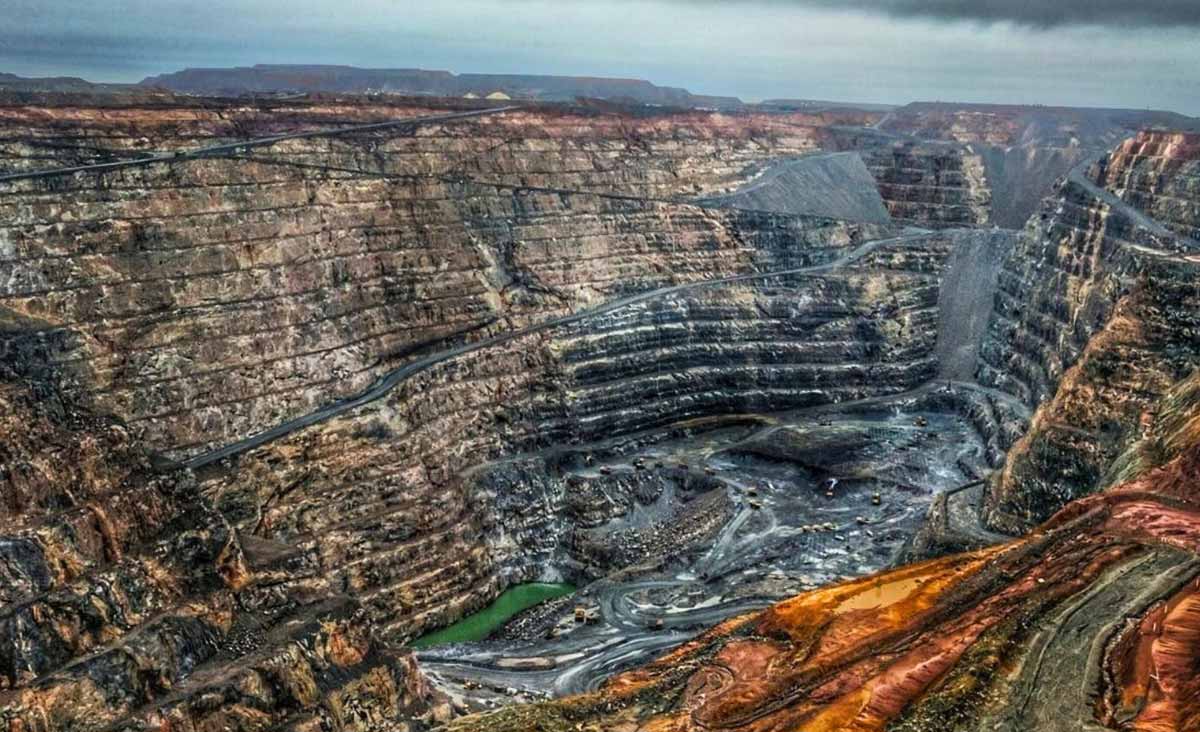The world’s largest lithium deposit lies hidden beneath an ancient American supervolcano, promising to revolutionize clean energy and global markets.
A hidden treasure lies buried beneath an ancient volcanic crater, and it’s being hailed as the world’s largest “lithium deposit” ever discovered.
The heart of the World’s largest “lithium deposit”
Deep in the American West, a long-quiet supervolcano whispers secrets of raw power and buried riches. Geologists fanning out across the McDermitt Caldera realized those whispers were about lithium. This vast crater, spanning Oregon and Nevada, formed sixteen million years ago in a cataclysmic eruption. Over epochs, volcanic ash settled into a lake basin, trapping minerals in fine-grained clays. Today, those clays hold a fortune estimated at €413 billion. Prospectors once drilled in Clayton Valley and Rhyolite Ridge. Their finds now pale beside this colossal reserve. Scientists mapping gravity anomalies first sensed something enormous below. Drill cores revealed illite layers brimming with metal.
Goodbye Pepsi: Costco makes a major decision that completely changes its strategy with sugary drinks
How detonating a nuclear bomb could protect planet Earth
Every sampled ton glitters with lithium concentrations up to 2.4 percent. That’s six times the global average. Mining companies have yearned for such grades. Share prices jumped on the slightest rumor. Local towns braced for boomtown bustle. Ranchers eyed pipelines crossing grazing allotments. Environmental groups sharpened their pencils. Permits and protests spun out in equal measure. Meanwhile, researchers published findings in Science Advances, spotlighting those high-grade clays. Each paragraph of the study described microscopic crystals with outsized implications. Battery makers salivated at the thought of domestic supply. Electric vehicle makers crunched projections of capacity and cost savings. Governments debated securing strategic materials for clean-energy goals. The discovery reshapes maps of resource geopolitics. What once felt like a footnote now roars into global headlines.
How rare processes created this world’s largest “lithium deposit”
The story beneath Thacker Pass reads like a detective novel written in rock. Volcanic glass from ancient eruptions leached lithium into alkaline waters. Those waters carved swaths of smectite clays rich in magnesium. Millennia later, simmering hydrothermal fluids surged back through crustal fractures. These hot solutions carried potassium, rubidium, fluorine, and cesium: elements that baptized smectite into illite. That transformation locked lithium firmly inside clay lattices. Geochemists measured these changes with X-ray diffraction and mass spectrometry. Every sample told a part of the tale: an eruption, a lake, a pulse of heat.
Columbia University teams partnered with Lithium Americas to bore dozens of holes. Each core reached depths of fifty to a hundred meters. Drillers hauled up cylinders of dusty gray clay, which researchers sliced into thin wafers. Under microscopes, wispy illite crystals revealed straight lines and zigzag bonds. Lab tests pegged average lithium content at 1.8 percent. Some pockets peaked at 2.4 percent. By comparison, China’s brine pits rarely exceed 0.2 percent. Chile’s Salar de Atacama clings to 0.3 percent. Those numbers make Thacker Pass breathtakingly rich in chemical terms. Geologists now model the deposit’s total tonnage. Early estimates top 10 billion tons of clay. If fully tapped, that clay could supply global markets for decades.
Processing methods still evolve; some propose roasting, others direct acid leaching. Engineers tinker with solvents that strip lithium with minimal waste. Pilot plants test each innovation in the harsh desert air. Every tweak could cut energy use or water consumption. In a water-scarce land, that matters. Communities debate trade-offs between resource wealth and environmental care. In dusty labs under fluorescent lights, scientists refine recovery rates. Their mission reads like a sprint: extract more lithium, with less footprint, in record time.
Beyond Riches: The People, the Land, and the Future
Dreams of lithium riches collide with human stories on the surface. Tribal nations like the People of Red Mountain call this land sacred. They speak of ancestors walking these sediments long before any drill rig. Elders worry about sacred springs running dry under mine pumps. Ranchers fear influxes of workers will strain water wells. County commissioners juggle permits and protests in endless meetings. Environmentalists track dust plumes and noise complaints on government apps. Lawyers chase hidden clauses in environmental impact statements. Permits weigh tons of paper, but local voices demand more. Community liaisons shuttle between board rooms and hogans. They translate technical jargon into plain talk by kitchen fires. Youth ambassadors film TikToks showing desert sunsets and mining convoys. Photo essays of illite crystals mingle with portraits of mud-spattered drillers.
Buys a coal mine for $2 million and discovers metals worth up to $36 billion
If you remember these 10 moments from decades ago, your memory is sharper than most in their 70s
Outside investors calculate returns in spreadsheets. Inside coffee shops, residents swap rumors about housing shortages. Every contract signed ripples through grocery aisles and school budgets. State officials tout job creation and energy independence. Critics warn that climate don’t need new mine scars bleeding across landscapes. They point to tailings ponds and heavy-metal spills around other lithium fields. Mitigation plans promise dust control and water recycling. Yet no blueprint foresees every failure or flood. In the distance, battery factories rise like chrome monoliths.
It could shape America’s energy future
Their smokestacks promise a bright, electrified tomorrow. That promise fuels political rhetoric and investor hype. Between drilling rigs and power lines, the desert carries on. Prickly pears bloom beneath sunburnt skies. Raptors wheel overhead in silent arcs. Everything feels alive with tension and possibility. The world’s largest “lithium deposit” may power next-generation vehicles. It may tilt the scales in clean-energy skirmishes. It unearths ancient chemistry and fresh controversies in equal measure. As drills descend and debates rage, one truth holds fast: this buried bounty will shape our energy story for generations.
